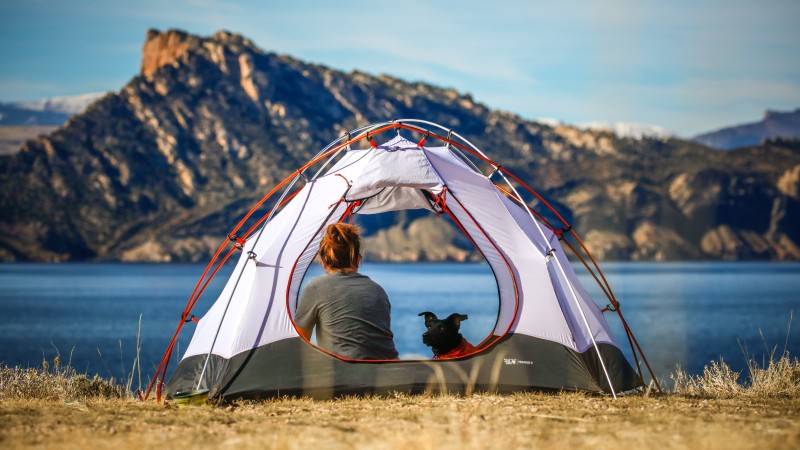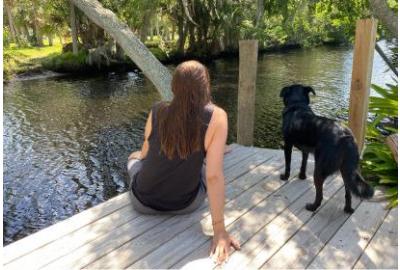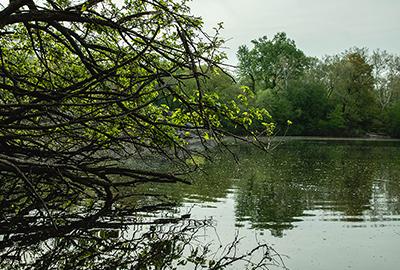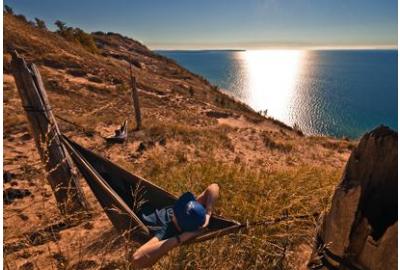Woo hoo, time to head out for a full weekend of sleeping under the stars and exploring the outdoors! And honestly, what better way to do it than with your best (fluffy) friend. (Just remember, animals or pets are not part of tours or activities in Scouting. This does not preclude merit badge programs where specific animals are part of the merit badge, like Horsemanship, Mammal Study, Reptile and Amphibian Study, etc.).
I reached out to Heather Gainey (MS, KPA CTP) who works at Tallahassee Memorial in the Animal Therapy department because she is immersed in keeping pets (and people who own pets) safe and comfortable. She had some really thorough expert advice around how to prepare your pup to safely accompany you on your camping adventures!
1. Research where you will be pitching your tent. Make sure that dogs are allowed, and read up on any and all guidelines (are dogs required to be leashed at all times?). Also, don’t forget the waste bags! Definitely do clean up after them, and don’t leave that for other campers to discover.
2. Check your daytime activities. Just because your campsite allows pets, doesn’t necessarily mean that the surrounding trails and attractions do! It is not safe to leave your pet behind when you head off on an all-day excursion – there are lots of issues with doing that, from weather-related concerns (never leave your pet cooped up and unattended outside at a campsite or in a car!) to wildlife-matters and noise problems (does your dog go nuts barking when you are gone? That isn’t a great experience for other campers).
3. Introduce your pup to the camping gear in advance. According to Heather, this is one of the best ways to make sure you have a great experience, because when your pup is happy and comfortable, you will be, too! She also reminds about patience – it may take multiple practice sessions in a familiar place (like at home) for your dog to get acclimated. She goes on to say that if your dog seems uncomfortable in any way, make sure you hunt down some tips from a positive reinforcement trainer to help guide you through making your fur-friend comfortable.
4. Before you go, make sure you have your pet properly tagged! Heather says, “Having your pet microchipped is an absolute MUST! This is a permanent way to identify your pet. Even with the best management in place, accidents can happen. When your dog is in an unfamiliar and strange place, they may be frightened and finding them [if they run off] could be extremely difficult.” She goes on to say that, “Having a collar with ID tags is the first line of defense (and you can also add a GPS tag tracker), but that could slip off. Be sure to keep up with your pet’s microchip manufacturer with your updated information and have their contact information handy, that way you can alert them immediately if your pet is lost.”
5. Look up the closest emergency animal clinic or hospital to where you will be camping and store their address and phone number. You probably won’t need it, but definitely better safe than sorry if something happens!
6. Prep for parasites. Be sure to apply flea and tick preventative before you go.
7. Check in with your dog’s personality and make sure you camp in a way that matches!
- If your dog is a very vocal dog, it would be best to make sure you set up far away from other campers so you don’t disturb their experience (some campsites even have rules about this and you also don’t want to get kicked out before you get to have your adventures!)
- If your dog hates to be on a leash or tie out, then smaller campgrounds with close-together campsites are probably not the best match for your pup.
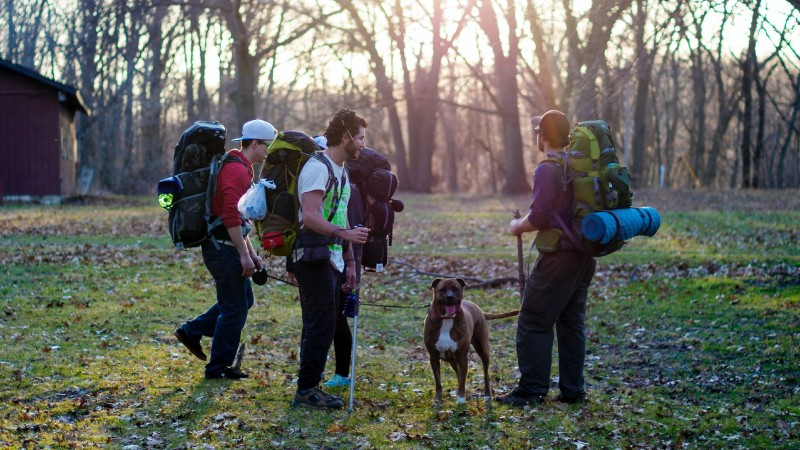

8. Keep your pet(s) close – make sure that if your dog is an explorer that they stay at your campsite – you don’t want him or her wandering off to visit other campers who may not welcome animals (or who may have pets themselves that do no get along with others!). You also don’t want them spooking up any of the wildlife (remember Chance and the porcupine in Homeward Bound?) or discovering poisonous plants (did you know that poison ivy, oak and sumac are all poisonous from an oil that could be carried back on your pet’s fur?) and sharing that with you or your family. Either a long-line leash or a tie-out might be a great idea for your pup if they don’t heel and like to wander off.
9. Don’t forget the water! Just like you, your pups need lots of water to stay hydrated. It is important to keep an eye on the water they are drinking – don’t let them drink standing water or salt water (just like humans, this is harmful to them).
10. Pack the first aid kit. You should never camp without one for yourself, and you definitely shouldn’t go without one for your pet! You can also add to your family kit as well, but be sure anyone who uses it knows which items are safe for your dog and which aren’t.
- If your pet needs any medication, include it! We have special treats for anti-anxiety that I always make sure to pack for our dog. She doesn’t always need them, but they are a life-saver when she does.
- Make sure you have a tick removing tool. The woods are the prime place to pick up ticks!
- Add in the paw protection. If you are hiking in areas where the ground is hot, be sure to pack booties that fit well to protect those pads. If you are adventuring somewhere with ice and snow, be sure to either bring insulated booties or specialized wax that will help prevent the ice from clumping in between their pads. Make sure you always wipe off ice and snow once you get back to the tent to prevent frostbite or raw skin. It is also a really good idea to bring some sort of paw moisturizer or balm to apply at the end of the day. Remember – camping can be a really active time for both you and your pets, and you need to take care of your (and their) extremities!
- Pack an iodine solution for cleaning small cuts or scrapes. You can use human antibacterial/antimicrobial ointment (such as Neosporin) on your pet as well, just make sure to either wrap the area or keep them from licking it off.
11. Pack extra food and their favorite toy(s). It is also a great idea to pack food in an airtight bag to keep it dry and safe from wild critters. As far as their toys go, bring one or two that will keep them entertained in down time and the toy or toys they like to sleep with.
12. Make sure your tent is either big enough for your pet to sleep inside with you or grab a separate dog tent – in a nutshell, make sure your dog is secure and can’t get out and wander at night. If you are camping somewhere where the temps drop at night, make sure you have an insulated bed for your pup to sleep on, and if it is going to be really chilly, grab a specialized doggie sleeping bag!
Do you have additional tips for packing the pup and heading out into the wild? Share with us and your Scout Shop family by leaving a comment below! And if you are heading out on that epic camping trip with your pet, be sure to snap a picture of your camp set up and tag us using #ScoutShopBSA on social – you might just find yourself #ScoutShopFamous when we share it!
